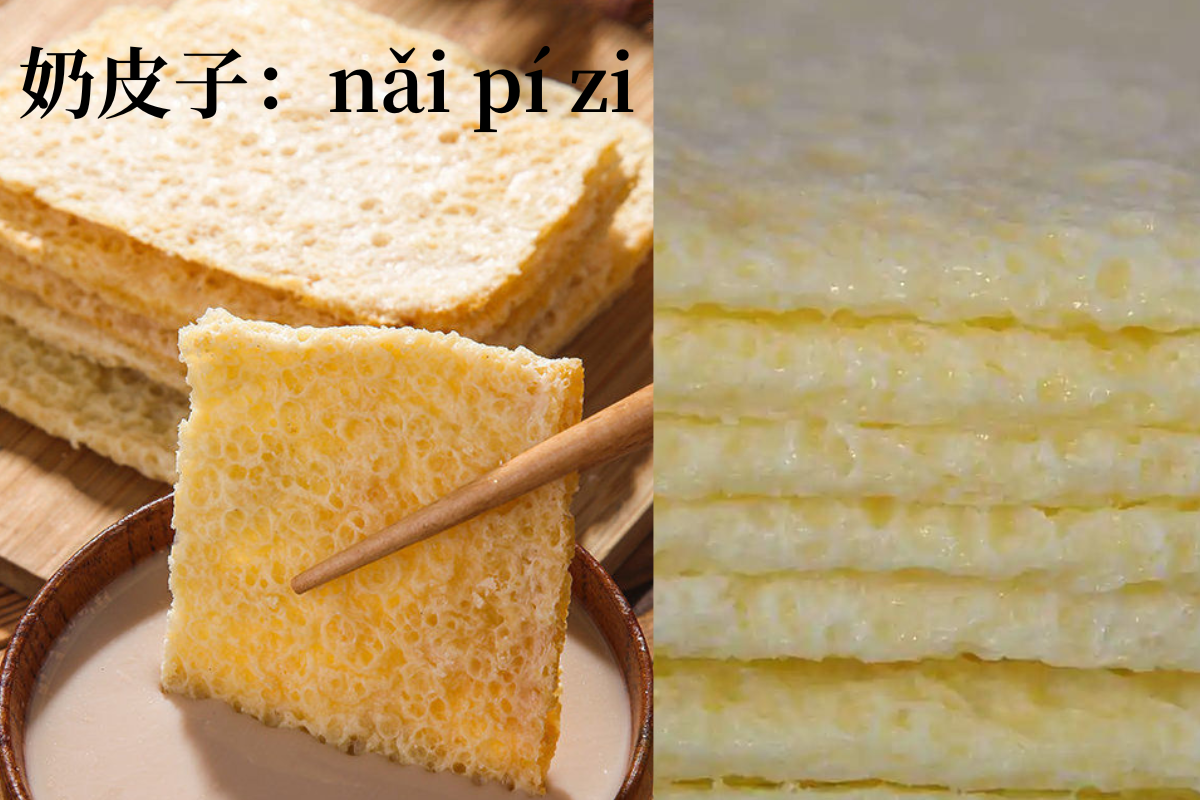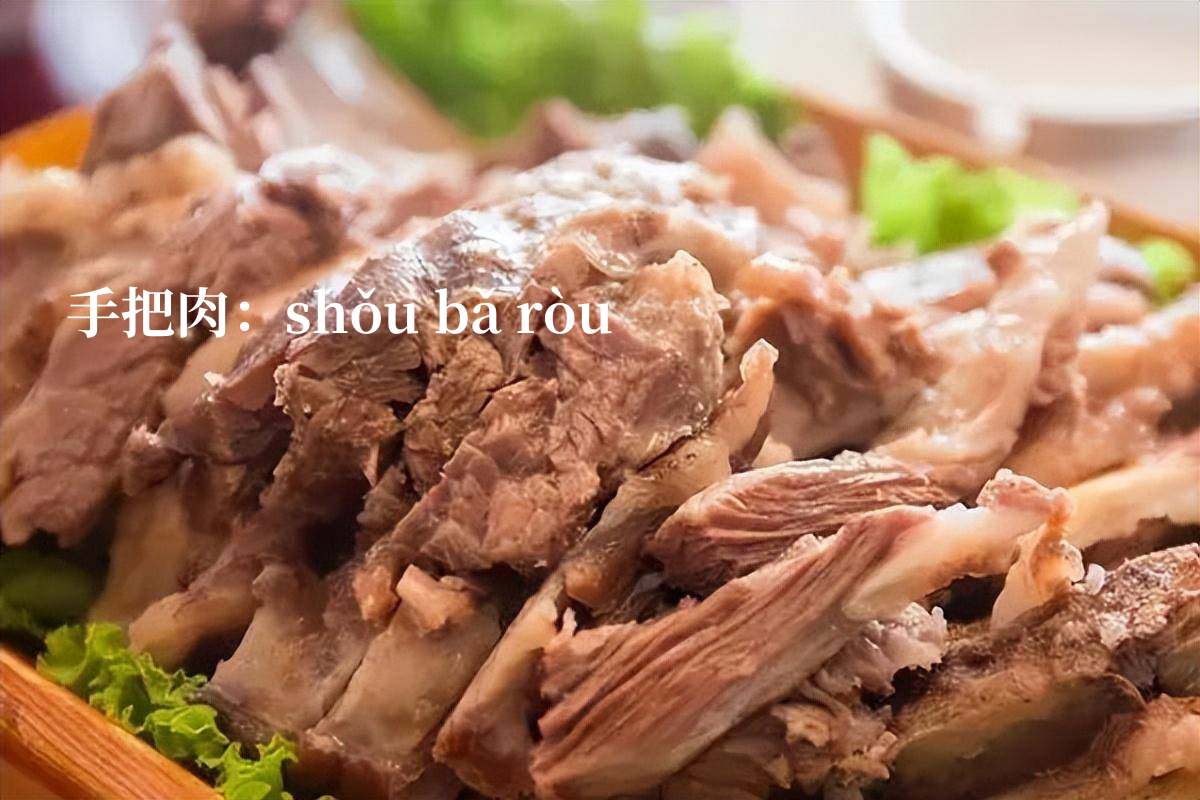Exploring Inner Mongolia's Culinary Treasures
The Inner Mongolia Autonomous Region is located in the northern part of China, where many nomadic ethnic groups reside, giving rise to a unique and profound ethnic culture. Today, join me in exploring the local customs and traditions through the lens of its delicious cuisine!
The initial culinary delight
奶皮子 (nǎi pí zi) milk skin

奶皮子(nǎi pí zi) milk skin, a traditional Inner Mongolian snack, is crafted using dairy products as its primary ingredients, delicately transformed through the process of baking. Its outer layer boasts a golden and crispy texture, while the interior remains tender and velvety, melting in your mouth with an enduring aftertaste. Each bite exudes an enticing, aromatic aura of milk fragrance, tantalizing the senses. Indulging in Naipizi allows you to experience the fervent passion and dedication of the Inner Mongolian people towards dairy products.
Known as '奶 (Nai) milk' in Mongolian, 奶皮子(nǎi pí zi) milk skin is derived from simmering fresh milk from sheep or cows over low heat. When a thin layer of fat solidifies on the surface, it is carefully lifted and air-dried using chopsticks, resulting in this essence of milk. With its pure aroma and abundant nourishment, it becomes even more delightful when savored alongside milk tea, milk-based desserts, or fried rice, making it a culinary gem to please esteemed guests.
Key words:
酥脆可口-sū cuì kě kǒu
Delightfully crispy and delectable.
奶香四溢-nǎi xiāng sì yì
The fragrance of milk permeates the air.
Key Sentences:
nǎi pí zi shì jīng guò fēng gān ér lái de.
奶皮子是经过风干而来的。
The milk skin is air-dried.
nǎi pí zi shì nǎi zhōng de jīng huá chéng fèn.
奶皮子是奶中的精华成分。
Milk skin is the essence of milk.
The second culinary delight awaits
内蒙古特色奶茶 (nèi měng gǔ tè sè nǎi chá) Mongolian milk tea

Mongolian milk tea, known as "苏台茄" (sū tái jiā) in the Mongolian language, is a popular dairy beverage among the Mongolian ethnic group. It is made by boiling compressed tea and carries a subtle salty taste. This is a traditional dietary custom of the Mongolian people, serving as both a refreshing thirst quencher and a crucial source of nutrition. It is believed that during the time of Genghis Khan, Mongolian warriors didn't need to carry excessive food supplies when going to battle, as having compressed tea was equivalent to having abundant provisions. Drinking milk tea not only warms the stomach but also aids in digesting meat. Mongolian herders rely on it in their daily lives.
To prepare 奶茶 (nǎi chá) milk tea, start by crushing the tea leaves and boiling them in a pot. Once the tea is concentrated, remove the leaves and continue boiling for a brief moment. Use a spoon to agitate the tea water and let it slightly condense. Then, add an appropriate amount of fresh cow's milk and stir with a spoon until the tea and milk blend perfectly. Bring it to a boil again, and now you can enjoy the delightful aroma of milk tea. As you hold a bowl of warm milk tea, the fragrances of milk and tea waft through your lips and teeth like sunshine, reflecting the soul of the grassland herders. Each sip becomes an exchange of emotions, and the sincerity and warmth of the herders embrace you.
Key words:
一壶内蒙古奶茶-yī hú nèi měng gǔ tè sè nǎi chá
A pot of Inner Mongolia milk tea
咸香味-xián xiāng wèi
addictive saltiness
Key Sentences:
dāng dì mù mín huì xuǎn zé zài yī tiān nèi hē sān cì xián nǎi chá.
当地牧民会选择在一天内喝三次咸奶茶。
The local herders prefer to have three servings of milk tea within a day.
hē nǎi chá néng bǔ chōng mù mín yīn chī bù dào shū cài ér quē shǎo de wéi shēng sù.
喝奶茶能补充牧民因吃不到蔬菜而缺少的维生素。
Drinking milk tea can supplement the vitamins that herdsmen lack because they cannot eat vegetables.
Lastly, waiting for us is the third delicacy
手把肉 (hǒu bǎ ròu) hand-served mutton

手把肉 (hǒu bǎ ròu) Hand-served mutton, a traditional delicacy cherished by Mongolian, Ewenki, Daur, Oroqen, and other nomadic and hunting ethnic groups 内蒙古呼伦贝尔草原(nèi měng gǔ hū lún bèi ěr cǎo yuán)on the grasslands of Hulunbuir in Inner Mongolia, has a long history of existence. The "meat" in hand-grabbed meat typically refers to lamb, which is renowned as a traditional ethnic dish in Inner Mongolia.
Lamb meat is tender, delicate, and easy to digest. It is rich in proteins with low fat content, making it lighter and less cholesterol-laden compared to pork and beef. It serves as a delectable choice during winter for warming the body and comforting the stomach. With warm and savory flavors, lamb meat not only nourishes the body but also offers therapeutic benefits, promoting physical well-being, nourishing the kidneys, enhancing skin health, and warding off the invasion of cold winds. It is a delicious delicacy often served at banquets.
Key words:
嚼劲十足-jiáo jìn shí zú
full of chewy texture.
炭火烤制-tàn huǒ kǎo zhì
Grilled over charcoal
Key Sentences:
“ shǒu bǎ ròu ”, yǐ shǒu zhōng shí ròu ér dé míng.
“手把肉”,以手中食肉而得名。
"Hand-served mutton" is named after eatting the meat in the hand.
shǒu bǎ ròu shì yī dào néng gòu zēng qiáng tǐ lì 、 qū bìng jiàn shēn de měi shí.
手把肉是一道能够增强体力、祛病健身的美食。
Hand-served mutton is a food that can enhance physical strength and dispel illness.
Are you interested in venturing to Inner Mongolia with your loved ones to indulge in milk tea and savor delicious mutton? Mastering Chinese language skills will empower you to explore any destination fearlessly.